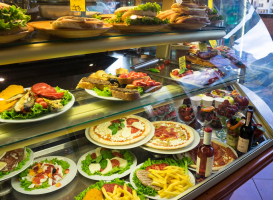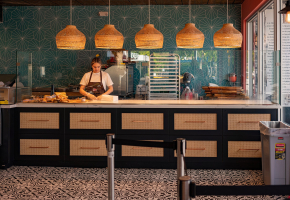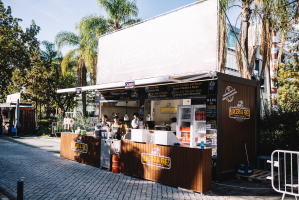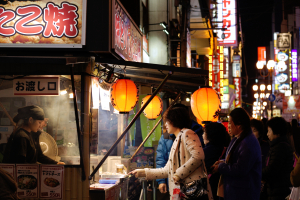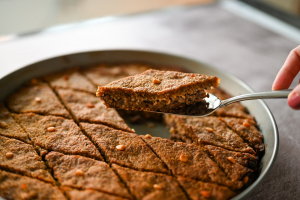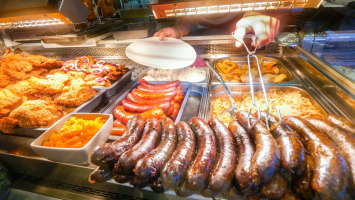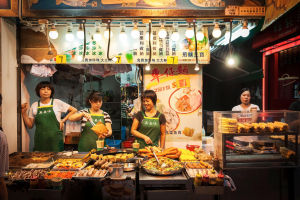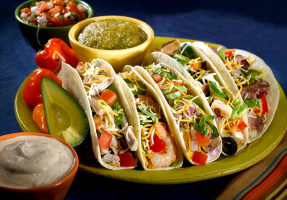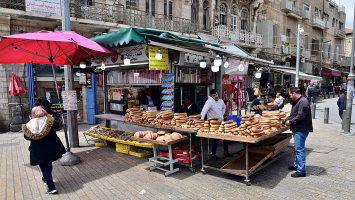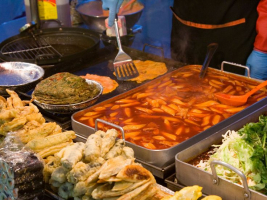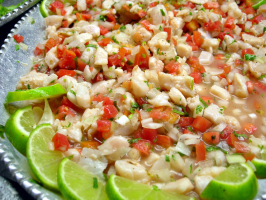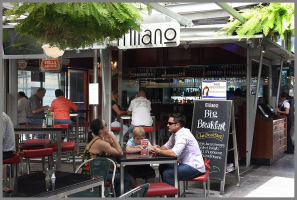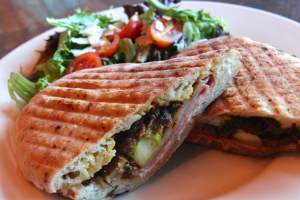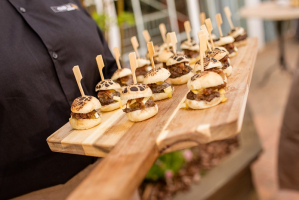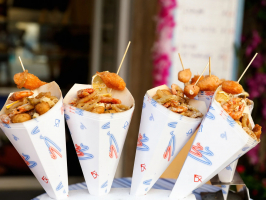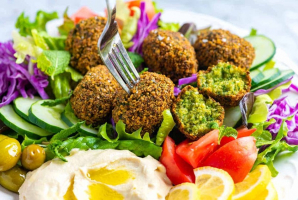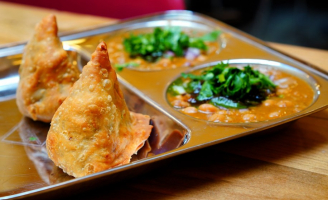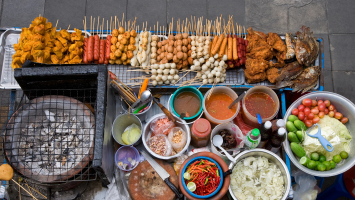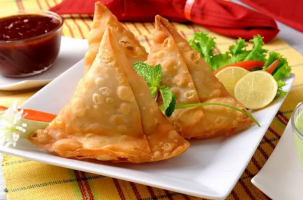Top 6 Must-try Food in Florence
Due to its rich creative history and advantageous location which it is encircled by the breathtaking Tuscan hills Florence is one of the most popular cities in ... read more...Italy. The dishes served here are made with very basic ingredients, particularly a lot of cow's organs. Let's explore some must-try food in Florence with Toplist!
-
The bistecca Fiorentina is exactly what it says it is: a steak from Florence. The meat can be from a heifer or veal (a cow that has not birthed a calf). Additionally, it must come from the Siena-born Chianina breed of cow. You should be aware that this steak is frequently ordered rare before placing your order. The dish doesn't have a complicated marinade to add taste, like in most Italian dishes. The flavor is enhanced by the salt, which also comes from the premium cut of beef. Like an American T-bone, the steak must be grilled over hot coals with the bone in to qualify as "Fiorentina." Steak, salt, pepper, and extra virgin olive oil are the four key components of a real bistecca Fiorentina.
The classic steak is made from the loin of young beef, or "scottona" (a young cow that has never been mated), and is cooked to rare. The weight of each steak must be between 1 and 1.5 kg. If even just one of these guidelines is broken, the steak is not truly "Fiorentina." In practically every restaurant in Florence, you may order this classic meal, which is frequently served with a side of cannellini beans and a fine Chianti.
The key to this dish's flavor is good cooking; the meat needs to be warm but not cooked, with a red exterior and an inside that is soft and moist. Forks or any other kitchen implements that can cut into the meat and crack the crust that forms at the start of cooking shouldn't be used to turn it because of this. As the tool may cause the leakage of priceless "juices" that give the meat flavor, it must instead be twisted and carefully pinched.
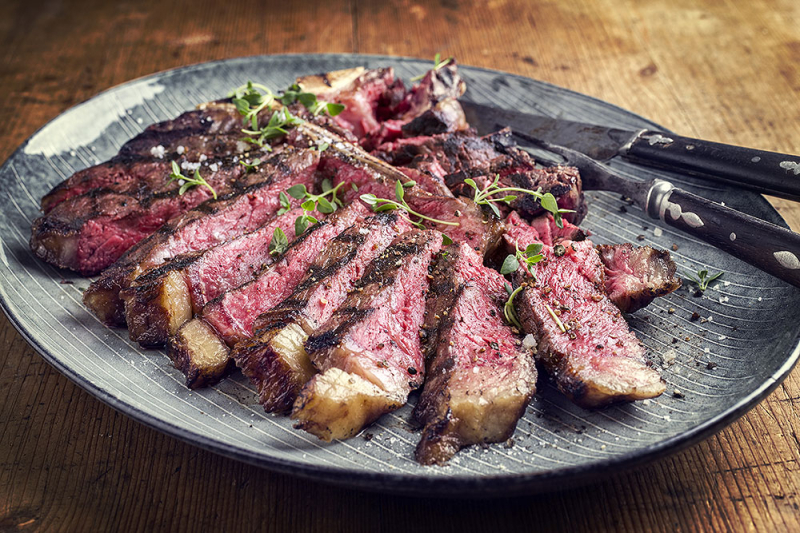
Photo: Barbecue Bible 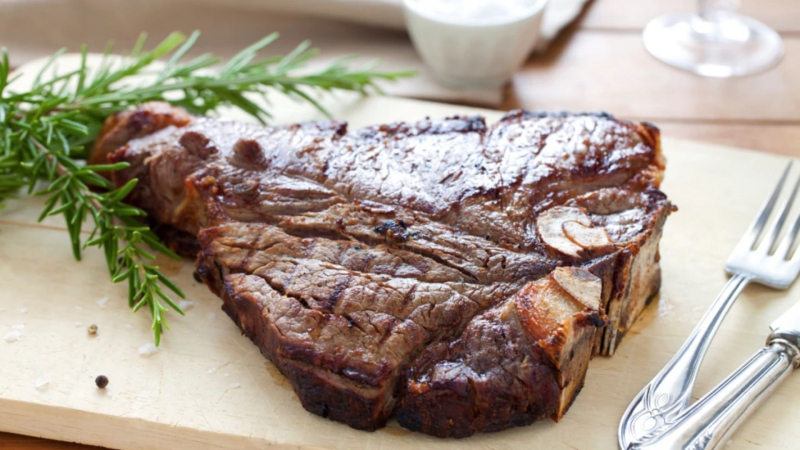
Photo: Cucchiaio d'Argento -
The next must-try food in Florence is Pappa al Pomodoro. Pappa al Pomodoro is a traditional Tuscan meal that was originally created as a way to repurpose old bread. Similar to panzanella, it is a simple meal with humble peasant beginnings and few ingredients that has, through time, experienced a dramatic revelation to the point where it is now served in kitchens and restaurants all over Italy. To make a good pappa al pomodoro, there are obviously many regional and individual variations, as is always the case with such straightforward recipes. For instance, you can add chopped garlic and onion, season it with pepper, chilli pepper, parsley, or basil, dilute it with broth to make the food softer, or enrich it with additional vegetables like celery or carrots. The Tuscan tradition has a fundamental rule that cannot be broken: grated cheese should never be added, in whole or in fragments, during the cooking process. Pappa al pomodoro is a very adaptable dish because it typically appeals to both children's and adults' tastes. Once it is finished cooking, it can be served hot in the winter or cold in the summer.
While "pappa al pomodoro" may be found in every restaurant in Tuscany, "Ribollita" (which translates to "boiled again") is a different soup that is only available in Florence. The three major components of the vegetable soup ribollita are kale, dry Tuscan bread, and borlotti beans. The soup is typically served in a terracotta terrine with grated parmesan on the side after being first boiled in a pan and then baked until the texture becomes creamy. In Italy, this meal is so well-known that a song is written about it!
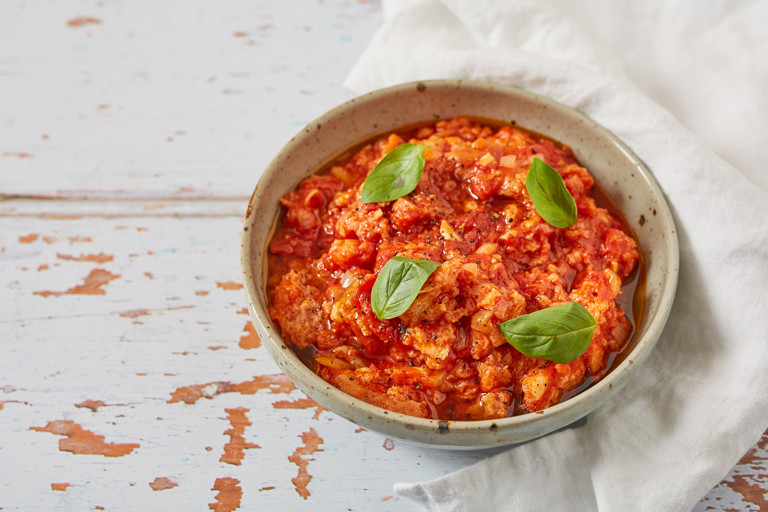
Photo: Great Italian Chefs 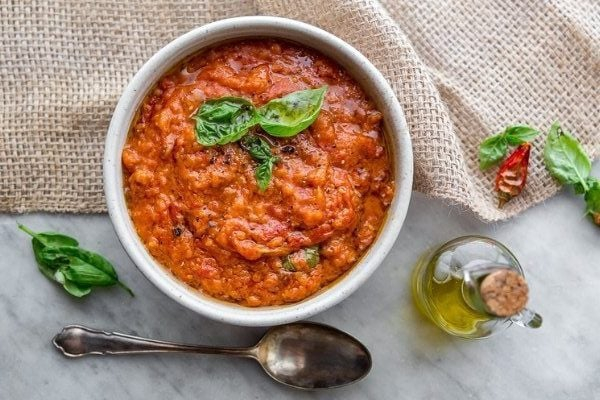
Photo: Mamablip -
Cow tripe, which has been previously boiled and then finely chopped, is used to make the dish "Trippa alla Fiorentina" (literally, "Florentine tripe"). Tripe has been a staple in cuisine since the time of the Greeks, who grilled it, as well as the Romans, who made sausages out of it. is well-known not only in Florence but also in other parts of Italy where it is regarded as a classic meal (in Naples it is served with soup, while in Milan it is served with milanese tripe carnacotta). Once the tripe is chilled, it is cooked once more with carrots, celery, onion, and crushed tomatoes. It is then seasoned with fresh bay leaves and served with a sprinkle of grated parmesan and Tuscan unsalted bread.After being thoroughly cooked and made tender, it is served with grated Parmiggiano cheese and Tuscan olive oil. Trippa alla Fiorentina is reputed to taste even better when reheated the next day. Bay leaves are frequently used to flavor the dish, although sweet basil leaves are also frequently used, particularly in the summer. Trippa alla Fiorentina is best served with a few slices of Tuscan bread.
Even though it is not a food, the trippa alla fiorentina is arguably the meal that best embodies the Tuscan capital. This dish is another example of Florentine cuisine that uses basic ingredients. is adored for its rich flavor that is nevertheless basic, in addition to how easily it can be prepared. Tripe strips are added to fried onions, which are then cooked. Depending on the recipe, more ingredients may then be added, such as carrots, celery, parsley, oil, salt, and pepper.
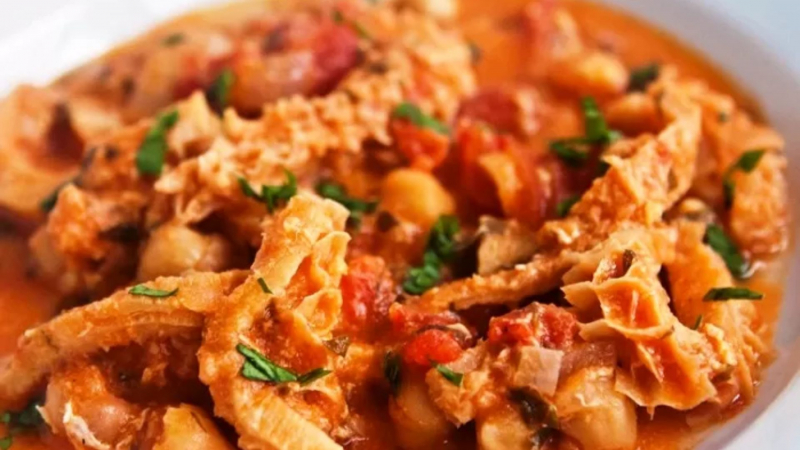
Photo: Buonissimo 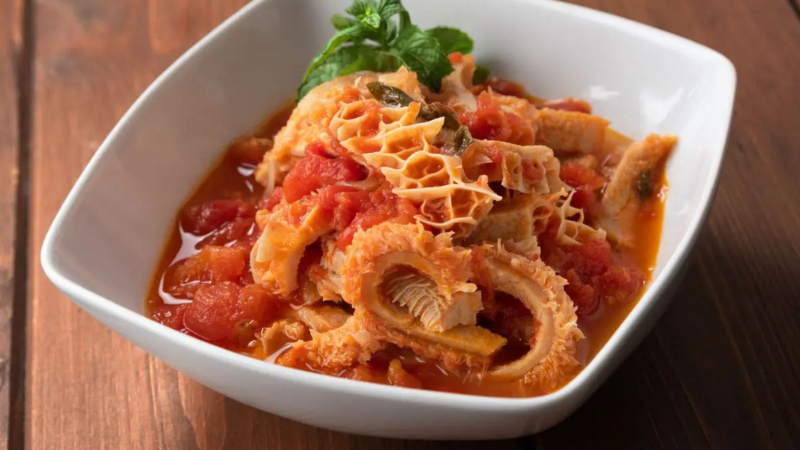
Photo: Primo Chef -
Fagioli all’uccelletto is definitely one of the must-try food in Florence. Fagioli all'uccelletto is the name of a rich and filling vegetarian side dish that is typical of poor Tuscan cooking. It is made of cannellini beans, tomato puree, garlic, oil, and sage leaves, which when cooked slowly together, create a warm, comforting, and juicy terrine. Peasants used to make this dish because they couldn't afford meat, so they cooked the beans with the same flavors as poultry and game, giving it the name Fagioli all They go well with a variety of different main dishes, such pork loin and chicken with beer, but they are also delicious on their own with some homemade bread, pieces of focaccia, or delectable polenta! Instantly taking the place of the traditional pasta and beans!
This dish has its roots in the Tuscan farming community's culinary heritage, particularly in the rural areas surrounding Florence where there were and still are abundant crops of several kinds of legumes, including borlotti, cannellini, and white beans. The recipe is suitable for any diet because it is high in dietary fiber. If the recipe is modified, such as by including sausage or rigatino when preparing it, the scenario changes. Beans all'uccelletto variations can always be found on Ciao Toscana.
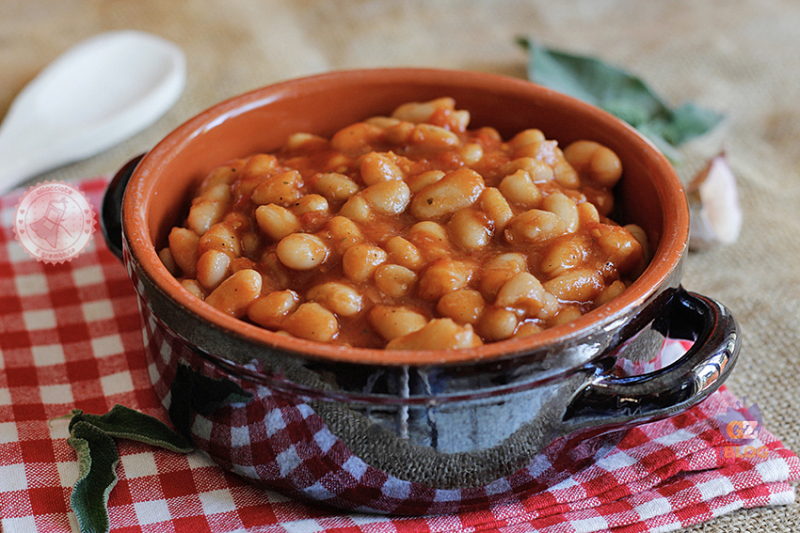
Photo: Blog GialloZafferano 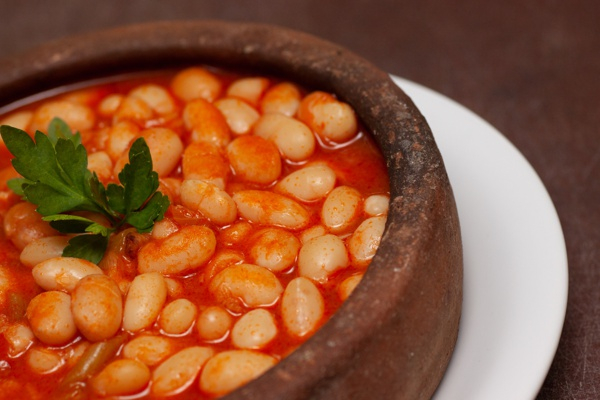
Photo: Planeat.eco -
The "schiacciata" (which means "flattened" in Italian) and the "cantucci" are two must-have desserts that are iconic of Florentine cuisine. Schiacciata is a cake that is typically made during the carnival season, but most bakeries sell it all year long due to its fantastic flavor and texture. It has a crunchy outside and a soft, moist interior. Although this traditional sponge cake is only three centimeters tall, it must be incredibly fluffy, buttery, and fragrant with citrus. The traditional Florentine lily, which is typically created with cocoa powder or sugar on the surface, is then placed on top of this sponge cake-like filling, which is typically Chantilly cream, pastry cream, or cocoa cream. You'll be cooking it frequently because it's great for sandwiches or simply eating on its own. The version varies depending on where you eat it in Tuscany. It varies between being significantly thicker and more wet and thinner and crisper in some places.
Cantucci are little dry biscuits that are made with butter and almonds (or sometimes hazelnuts). Because they are baked twice, they are very crumbly and friablef. When dipped in sweet wine, these dry biscuits are reputed to be delicious, crisp, and outstanding (original Cantucci + Vin Santo is an essential traditional pairing). The classic method for biscotti is quick and easy, but it has a flaw: because they are actually cooked twice, if the oven temperature is exceeded, the outcome could be hard, inedible biscuits. Almonds are the essential ingredient for making good Italian biscotti; according to tradition, you should only use unpeeled almonds because they give the cookies a unique flavor, but you may also use peeled almonds to naturally sweeten the cookies by adding a few more than necessary.
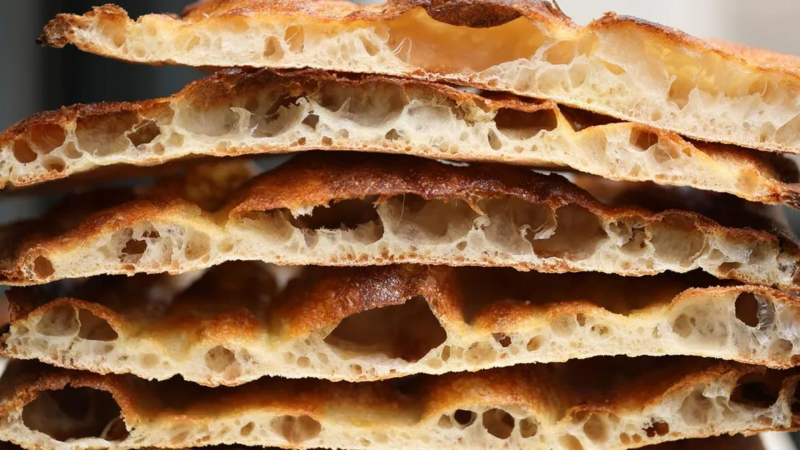
Photo: La Cucina Italiana 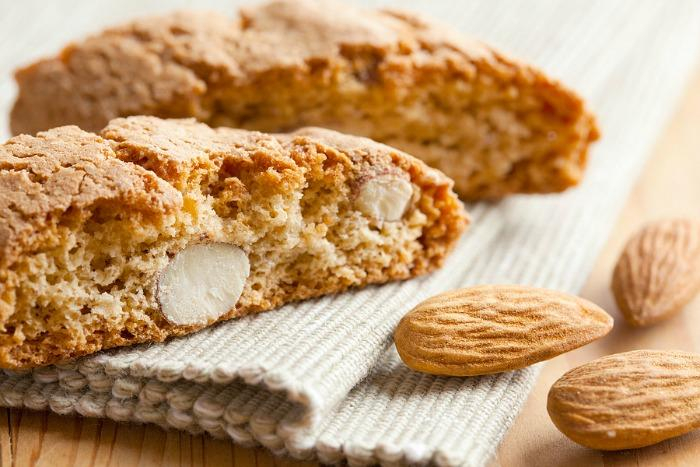
Photo: Italy Magazine -
Talking about must-try food Florence, Lampredotto is not to be missed. When visiting Florence, you'll come across numerous tiny stands and food carts that sell the iconic Lampredotto sandwich along with other offal dishes like "puppa" (the cow udder). The fourth and last stomach of cows, which is used to make this traditional dish, is cooked until the meat is soft in hot water with tomatoes, onions, parsley, and celery. You can have Lampredotto in one of two ways: as a main course with the typical Italian green sauce, or neatly chopped within a bun to make the sandwich even more delicious, the bread is usually dipped in the meat sauce.
Lampredotto was probably created by Italians from the lower classes who could only afford the less desirable portions of the cow, such as its four stomachs. The fourth stomach, or abomasum, has glandular tissue covering it, making it the least preferred and hence least expensive alternative along the digestive route. However, after being cleaned, slowly cooked, and sliced, it yields a cheap sandwich filling with a luscious, roast beef-like texture. The preferred panino presentation is called bagnato, or "bathed," when the top bun is dipped in tripe broth and placed on top of your lampredotto meal while still warm and moist. As you tuck into a delicious piece of local history, sit by the river and watch the boats sail by.
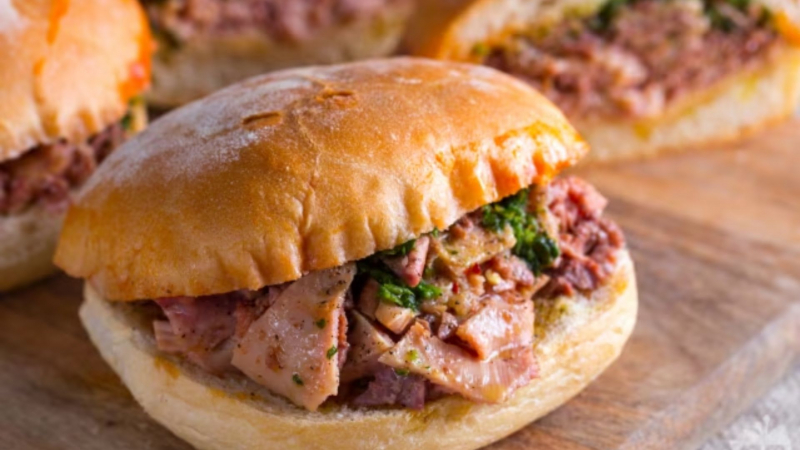
Photo: Ricette GialloZafferano Lampredotto 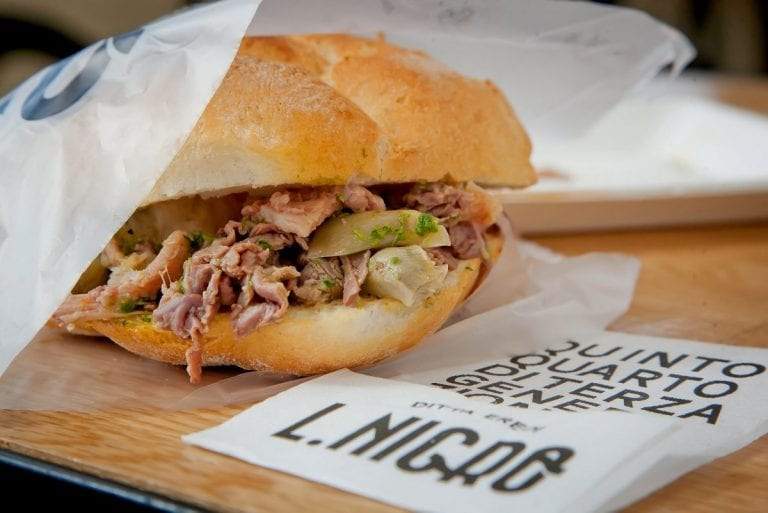
Photo: Gambero Rosso








